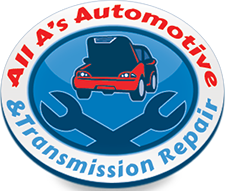Transmission Fluid Exchange: When to Schedule Service

 Most modern vehicles seem to run forever without a lot of effort on our part. Maintenance-free components are becoming the norm, but are they really ‘maintenance-free’? Most auto manufacturers still suggest routine maintenance intervals for most ‘maintenance-free’ systems. Transmission fluid is a great example. Whether your new vehicle has a manual or automatic transmission, a periodic transmission fluid exchange will extend the life of your transmission and help prevent issues like slipping gears.
Most modern vehicles seem to run forever without a lot of effort on our part. Maintenance-free components are becoming the norm, but are they really ‘maintenance-free’? Most auto manufacturers still suggest routine maintenance intervals for most ‘maintenance-free’ systems. Transmission fluid is a great example. Whether your new vehicle has a manual or automatic transmission, a periodic transmission fluid exchange will extend the life of your transmission and help prevent issues like slipping gears.
What Is A Transmission Fluid Exchange?
To protect your vehicle, schedule the transmission fluid and filter changes as your vehicle owner’s manual recommends. During a transmission fluid exchange service, your service technician will flush and refill the transmission reservoir and replace the filter. A correct fluid exchange uses the transmission pump to flush out the old fluid from the entire transmission system while installing the new fluid. The transmission pan and torque converter hold the majority of the transmission fluid. This service should also include tightening the transmission valve body bolts and installing a new transmission pan gasket to prevent leaks.
Transmission Fluid Service Intervals
Factory-recommended intervals for fluid flush vary by vehicle year, make, and model. For example, some auto manufacturers recommend periodic transmission fluid inspections and to “replace when necessary.” Others may advise a transmission fluid exchange every 60,000 miles. To stay safe, follow your vehicle’s suggested maintenance interval schedule to satisfy the warranty and extend the life of your transmission.
Transmission Fluid Purpose
Transmission fluid, a viscous oil, plays a crucial role in your vehicle’s transmission. It allows for smooth shifting and provides ample lubrication to the transmission’s internal components. Most importantly, it prevents heat build-up and slipping gears and reduces wear and tear, extending the transmission’s lifespan.
Transmission Fluid Types
The transmission fluid type you use depends upon your vehicle’s make, model, and year. Transmission fluid is typically colored bright pink, red, or green to help distinguish it from engine oil. Always follow your vehicle manufacturer’s recommendation for the correct transmission fluid type and service intervals. A transmission fluid service is often required more frequently if the vehicle operates under severe conditions. The definition of ‘severe conditions’ may vary by manufacturer.
Automatic Transmission Fluid (ATF)
Automatic transmission fluid (often called ATF) provides optimal performance and protection to an automatic transmission. ATF is generally colored pink or red. Critical areas of ATF performance include:
- Over-heating resistance
- Prevent deposits and sludge from forming at high temperatures
- Anti-friction characteristics enable smooth gear changes by the transmission clutches and bands
- Ensures anti-wear and gear durability even with heavy loads
- Viscosity stability (or thickness) over a broad temperature range
- Provide effective operation of hydraulics and electronics at low temperatures
Continuously Variable Transmissions (CVTs)
Unlike typical automatic transmissions with distinct gear shifts, continuously variable transmissions have constantly changing speed ratios. They can also help improve fuel economy. Hybrid vehicles are often equipped with CVTs, while they are only occasionally used in non-hybrids. A CVT-specific fluid should always be used in continuously variable transmissions to provide adequate protection. CVT fluids have no standard color, so read your owner’s manual for the correct type for your vehicle.
Manual Transmission Fluid (MTF)
Manual transmission fluid (MTF) requires specific performance and protection conditions to contribute to durability and shift quality. The transmission components should engage smoothly for proper gear shift performance. MTF is similar to engine oil and is generally brown to amber. Commonly suggested MTF formulas include SAE 80W, 75W-90, 80W-90, and SAE 90.
Old Transmission Fluid Warning Signs
Transmission issues can easily creep up on you if you are not diligent. Below are some common warning signs tied to low or old transmission fluid:
- Dark fluid: If the dipstick fluid is dark or smells burnt, it’s time to exchange the fluid. Dark transmission fluid can also indicate a more significant issue. Schedule a service to have the entire system checked by a certified mechanic.
- Difficulty shifting gears: If you experience issues when shifting gears, specifically from a lower gear to a higher gear, it may be time to change the fluid.
- Leaking fluid: Spots or puddles of pink, red, or dark fluid under your parked car might be from the transmission. Get it inspected to determine the cause.
- Poor fuel efficiency: If you notice a reduced fuel efficiency, the transmission may operate inefficiently.
- Rough or noisy shifting: If you notice that the transmission jerks or shifts loudly, the fluid may be old or contaminated.
- Slipping gears: If the transmission drops out of gear as you drive or takes too long to engage, the transmission fluid may be low or contaminated, and it is time to change it.
- Transmission overheating: Your transmission temperature gauge should hold steady in the mid-range. If it’s overheating, the fluid is not cooling the transmission adequately.
New Transmission Fluid Benefits
Ensuring your transmission fluid levels are full and maintaining routine maintenance service intervals may help your transmission’s overall performance and longevity.
- Smooth-shifting without excess noise, slipping gears, or grinding
- Reduced chance of transmission overheating
- Improved fuel efficiency
New Transmission Fluid Hazards
It’s important to note that replacing old transmission fluid with new fluid may pose risks. These risks apply mainly to automatic transmissions that lack routine transmission service. The debris in the old fluid can provide additional friction that aids the worn internal clutches in gripping the gears. Fresh fluid removes this debris, potentially leading to gear slippage. This is particularly common in vehicles over 100,000 miles with no transmission fluid maintenance or service history.
If you own an older car with a spotty maintenance record or are looking to purchase a used car, consult your service technician for advice. They can test the transmission fluid and provide valuable guidance regarding its condition.
Transmission Fluid Exchange Services
All A’s Automotive & Transmission Repair is a family-owned and operated business. We have the experience and resources to service your manual or automatic transmission, diagnose slipping gears, and perform a transmission fluid exchange.
Schedule Your Transmission Fluid Exchange Service
When your car needs transmission service, don’t put it off — call (989) 631-4672 or visit us online to schedule your appointment today!
Posted in: Auto Maintenance, Transmission
Leave a Comment (0) ↓
